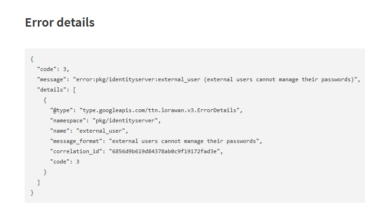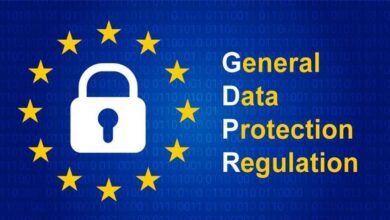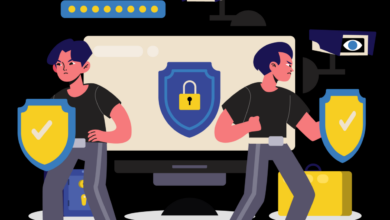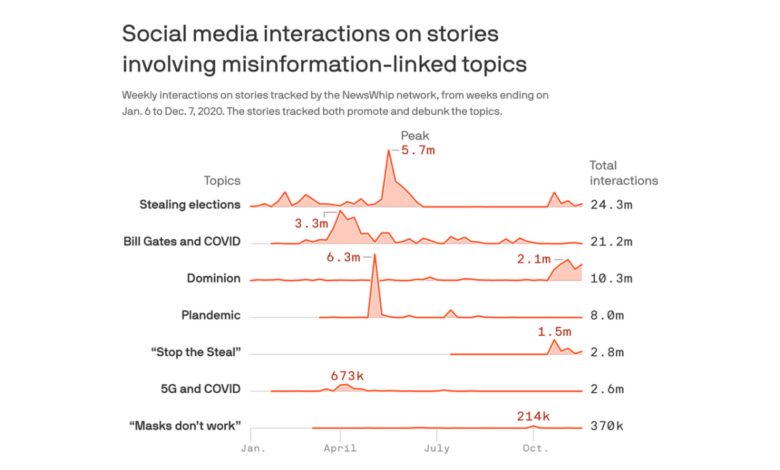
How Mid-Market Companies Can Outsmart Cybersecurity Misinformation
How mid market companies can out smart cybersecurity misinformation – How Mid-Market Companies Can Outsmart Cybersecurity Misinformation: In today’s digital world, cybersecurity threats are more prevalent than ever, and mid-market companies are particularly vulnerable. They often lack the resources of larger corporations, yet face similar risks. But the truth is, savvy strategies and a proactive approach can significantly reduce their vulnerability. This isn’t about throwing money at the problem; it’s about smart choices and a commitment to education.
Let’s dive into how mid-market companies can navigate the treacherous waters of cybersecurity misinformation and emerge stronger.
This post will explore common cybersecurity myths affecting mid-market businesses, the sources of this misinformation (from dodgy websites to outdated practices), and the real-world impact—financial and reputational—of falling for these scams. We’ll then look at building a robust cybersecurity awareness program, implementing effective security measures, and fostering a company culture that prioritizes security. We’ll also explore the benefits and drawbacks of outsourcing cybersecurity, and how to measure the success of your efforts.
Get ready to equip your business with the knowledge it needs to thrive in a digital landscape riddled with misinformation.
Understanding the Cybersecurity Misinformation Landscape for Mid-Market Companies
Mid-market companies, often lacking the extensive cybersecurity resources of larger enterprises, are particularly vulnerable to misinformation. This can lead to flawed security strategies, increased risk exposure, and ultimately, significant financial and reputational damage. Understanding the sources and impact of this misinformation is crucial for effective cybersecurity posture.The prevalence of cybersecurity myths significantly impacts mid-market businesses. These companies often rely on readily available information, making them susceptible to inaccurate or outdated advice.
This can lead to a false sense of security and inadequate protection against real threats.
Common Cybersecurity Myths Among Mid-Market Businesses
Many prevalent myths hinder effective cybersecurity practices in mid-market companies. These range from simplistic beliefs about security software to misunderstandings about employee training effectiveness. For example, the belief that a single, strong firewall is sufficient protection against all cyber threats is a dangerous misconception. Another common myth is that only large companies are targets of cyberattacks; this is demonstrably false, as mid-market firms are increasingly attractive targets due to their often-less robust security measures.
Finally, the idea that regular software updates are optional is a recipe for disaster. Outdated systems are significantly more vulnerable to exploits.
Sources of Cybersecurity Misinformation
Misinformation originates from various sources, often compounding the problem for mid-market companies. Unreliable websites offering quick fixes or simplistic solutions are a primary culprit. Social media platforms, while offering valuable information, also spread inaccurate or misleading security advice. Outdated security practices, passed down through internal teams or learned from legacy systems, can also perpetuate inaccurate beliefs. Finally, poorly designed or misleading marketing materials from security vendors can unintentionally contribute to the spread of misinformation.
Impact of Misinformation Across Mid-Market Sectors
The impact of cybersecurity misinformation varies across different mid-market sectors. For example, healthcare providers might underestimate the HIPAA compliance requirements, leading to significant legal and financial repercussions. Financial institutions might fail to adequately protect sensitive customer data, resulting in reputational damage and legal liabilities. Manufacturing companies could suffer from operational disruptions due to compromised systems. The consequences are varied but consistently damaging.
Financial and Reputational Risks
Believing cybersecurity misinformation carries significant financial and reputational risks. Financial risks include the direct costs of data breaches, including investigation, remediation, legal fees, and regulatory fines. Indirect costs include lost productivity, damage to customer relationships, and decreased market value. Reputational damage can be equally devastating, leading to loss of customer trust, difficulty attracting and retaining talent, and decreased investor confidence.
A single major breach can cripple a mid-market company. For instance, a small manufacturing company suffering a ransomware attack might face not only the cost of paying the ransom but also the loss of production and potential contracts, leading to significant financial losses and lasting reputational harm.
Developing a Robust Cybersecurity Awareness Program: How Mid Market Companies Can Out Smart Cybersecurity Misinformation
A strong cybersecurity awareness program is crucial for mid-market companies battling misinformation. It’s not enough to simply have robust security systems; your employees need the knowledge and skills to identify and avoid threats. A comprehensive program empowers your team to become the first line of defense against sophisticated attacks fueled by misinformation.Effective employee training is the cornerstone of a successful cybersecurity awareness program.
This isn’t about overwhelming employees with technical jargon; it’s about equipping them with practical skills to navigate the digital landscape safely. The program should be tailored to the specific roles and responsibilities within your organization, addressing the unique threats each team faces.
Comprehensive Employee Training Program Design
A multi-faceted approach is essential. The program should encompass various learning styles, incorporating interactive elements to maintain engagement and maximize knowledge retention. Regular refresher training is also vital to keep employees updated on evolving threats and best practices. For example, a recent surge in AI-powered phishing scams necessitates continuous education on the latest tactics used by cybercriminals.
The program’s success hinges on its ability to adapt and evolve with the ever-changing threat landscape. This includes incorporating real-world examples of successful attacks, analyzing what went wrong, and detailing how the company improved its security posture.
Engaging Training Videos
Short, engaging videos are a highly effective method for delivering cybersecurity awareness training. These videos should focus on specific threats, such as phishing emails, malware, and social engineering attacks. Visual aids like animated graphics can help to simplify complex concepts and make the training more memorable. For instance, a video could depict a realistic phishing email, highlighting the subtle cues that indicate its fraudulent nature, such as grammatical errors, suspicious links, or urgent requests for personal information.
Another video might demonstrate the consequences of clicking a malicious link, showing a visual representation of malware infecting a system and the resulting data breach. The videos should conclude with clear, concise steps employees can take to protect themselves and the company.
Phishing Email Identification
The training should include numerous examples of phishing emails, demonstrating how to identify them. This involves teaching employees to look for red flags such as inconsistencies in sender addresses, unusual greetings, suspicious links, urgent requests for personal information, and poor grammar or spelling. A practical exercise could involve presenting employees with a series of emails—some legitimate, some fraudulent—and asking them to identify the phishing attempts.
Feedback on their performance, including explanations of why certain emails were flagged as suspicious, is critical for reinforcing learning and improving identification skills. Real-world examples of phishing scams targeting specific industries, such as healthcare or finance, should be incorporated to make the training more relevant and impactful.
Multi-Stage Training Program with Quizzes and Practical Exercises
A multi-stage training program ensures that employees retain the information and develop practical skills. Each stage should build upon the previous one, starting with foundational concepts and progressing to more advanced topics. Regular quizzes and practical exercises will reinforce learning and identify knowledge gaps. For instance, the program could begin with a basic module on password security, followed by a quiz to test understanding.
Subsequent modules could cover more complex topics like identifying phishing emails and responding to security incidents, each with corresponding quizzes and practical exercises. This staged approach allows for continuous assessment and improvement of employee knowledge and skills, ensuring the program’s effectiveness in protecting the company from cyber threats.
Implementing Effective Security Measures Based on Facts
Cybersecurity isn’t about reacting to the latest scare; it’s about building a robust, fact-based defense. Mid-market companies often lack the resources of larger enterprises, but by focusing on proven strategies and prioritizing essential security measures, they can significantly reduce their risk. This section Artikels practical, effective steps based on industry best practices.
Secure Password Management and Multi-Factor Authentication
Strong passwords are the first line of defense against unauthorized access. However, relying solely on passwords is insufficient. Implementing multi-factor authentication (MFA) adds an extra layer of security, making it exponentially harder for attackers to gain access even if they obtain a password. Best practices include using a password manager to generate and securely store complex, unique passwords for each account.
MFA should be enabled wherever possible, leveraging methods like one-time codes via authenticator apps, hardware security keys, or biometric authentication. Regular password rotation and policies enforcing password complexity are also vital.
Regular Software Updates and Patching Vulnerabilities
Outdated software is a prime target for cyberattacks. Attackers frequently exploit known vulnerabilities in older versions of software. A robust patching strategy involves regularly updating all software – operating systems, applications, and firmware – to the latest versions. This includes implementing a centralized patching system to streamline the process and ensure timely updates across all devices. Prioritize patching critical vulnerabilities first, based on severity ratings provided by vendors or security advisories.
Regular security scans can help identify outdated software and vulnerabilities.
Endpoint Detection and Response (EDR) Solutions
Endpoint Detection and Response (EDR) solutions provide advanced threat detection and response capabilities at the endpoint level (computers, servers, mobile devices). EDR goes beyond traditional antivirus software by continuously monitoring system activity for malicious behavior. It detects and responds to threats in real-time, reducing the impact of successful attacks. EDR solutions often include features like threat hunting, forensic analysis, and automated response capabilities, enabling quicker identification and remediation of security incidents.
Choosing an EDR solution that integrates with existing security tools can improve overall security posture.
Robust Data Backup and Recovery Strategy
Data loss can cripple a business. A comprehensive data backup and recovery strategy is crucial for business continuity. This includes regular backups of critical data to multiple locations, utilizing both on-site and off-site storage options. The backup strategy should account for various scenarios, including hardware failure, ransomware attacks, and natural disasters. Regular testing of the recovery process is essential to ensure data can be restored quickly and efficiently.
The 3-2-1 backup rule (3 copies of data, on 2 different media, with 1 copy offsite) is a widely accepted best practice.
Comparison of Cybersecurity Solutions
| Solution | Features | Cost | Benefits |
|---|---|---|---|
| Endpoint Detection and Response (EDR) | Real-time threat detection, incident response, threat hunting | Varies greatly depending on vendor and features; typically a subscription model. | Reduced dwell time, improved incident response, advanced threat detection. |
| Security Information and Event Management (SIEM) | Log aggregation, security monitoring, threat intelligence | Varies greatly depending on vendor and features; typically a subscription model. | Centralized security monitoring, improved threat visibility, faster incident response. |
| Cloud Access Security Broker (CASB) | Cloud security posture management, data loss prevention (DLP) for cloud apps | Varies greatly depending on vendor and features; typically a subscription model. | Enhanced security for cloud applications, improved data visibility and control. |
| Managed Security Service Provider (MSSP) | 24/7 security monitoring, incident response, vulnerability management | Varies greatly depending on services; typically a subscription model. | Access to expert security professionals, reduced operational overhead, improved security posture. |
Building a Culture of Cybersecurity within the Organization
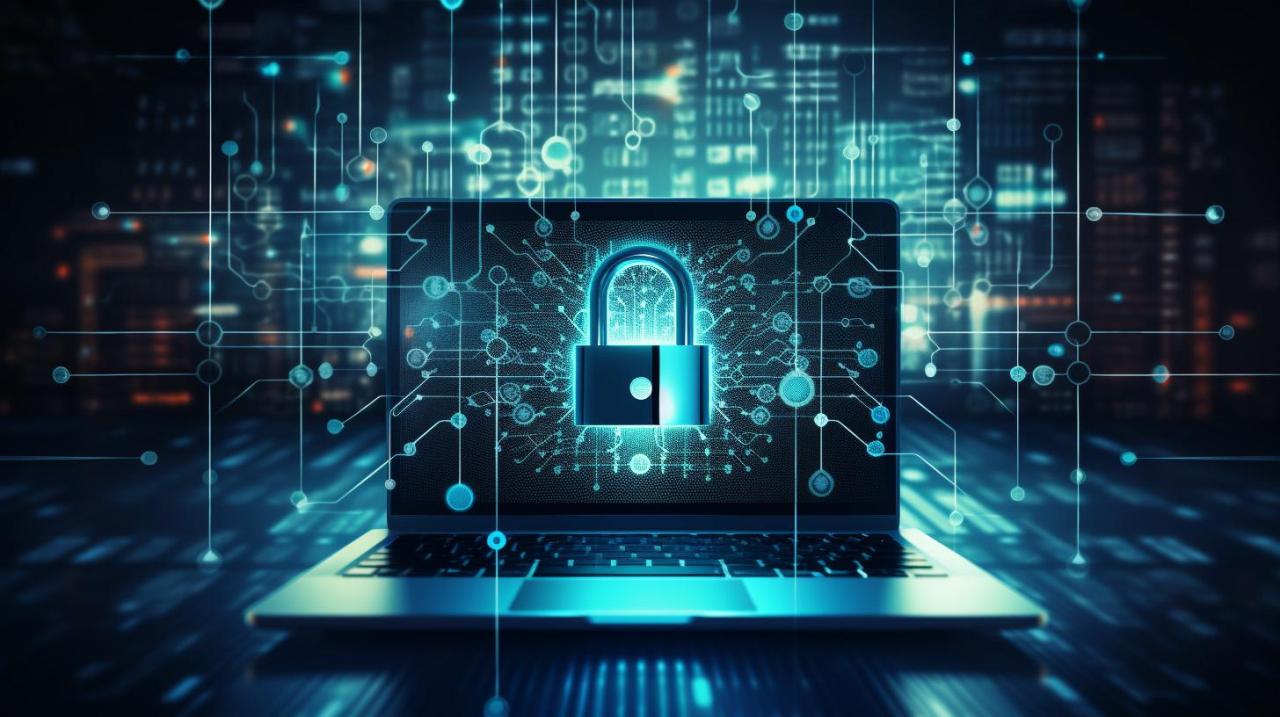
Building a proactive security culture isn’t about installing more software; it’s about fundamentally changing how your employees think about and interact with technology. It requires a shift from reactive responses to security breaches to a proactive, preventative approach where security is everyone’s responsibility. This involves clear communication, employee empowerment, and a robust incident response plan.A strong cybersecurity culture significantly reduces the risk of successful attacks.
Employees become the first line of defense, actively identifying and reporting potential threats. This proactive approach, combined with effective security measures, creates a much more resilient security posture than simply relying on technology alone. The cost of a data breach extends far beyond financial losses; it includes reputational damage, loss of customer trust, and legal ramifications. Investing in a robust cybersecurity culture is an investment in the long-term health and success of your mid-market company.
Fostering Proactive Security Awareness
Creating a proactive security awareness culture involves consistent education and reinforcement. This isn’t a one-time training session; it’s an ongoing process. Regular, engaging training modules, tailored to the specific roles and responsibilities within the organization, are crucial. These modules should cover topics such as phishing scams, social engineering tactics, password security, and safe browsing practices. Gamification techniques, such as quizzes and interactive scenarios, can significantly increase employee engagement and knowledge retention.
Regular reminders and updates on current threats also help keep security top of mind. For example, a monthly newsletter highlighting recent phishing attempts or successful attacks on similar companies can effectively illustrate the real-world relevance of security practices. Furthermore, incorporating security awareness into existing company communications, such as internal newsletters or all-hands meetings, can help normalize security discussions and make it a regular part of the organizational dialogue.
Open Communication about Cybersecurity Threats and Incidents
Transparency is key to building trust and fostering a culture of security. Openly communicating about cybersecurity threats and incidents, even minor ones, allows employees to understand the risks and learn from mistakes. This doesn’t mean divulging sensitive information, but it does mean explaining the nature of the threat, the steps taken to mitigate it, and the lessons learned.
Regular security updates, perhaps through company-wide emails or internal communication platforms, can keep everyone informed about the current threat landscape and any relevant security measures. For instance, following a phishing attempt, an email explaining the details of the attack, how it was identified, and what employees should do to avoid falling victim in the future, would build trust and reinforce learning.
This transparency demonstrates that security is a priority and encourages employees to report suspicious activity without fear of retribution.
Encouraging Employees to Report Suspicious Activity
Establishing a clear and easy reporting mechanism for suspicious activity is vital. This should involve multiple channels, including a dedicated email address, a secure online reporting system, or even a confidential hotline. It’s crucial to emphasize that reporting suspicious activity is not tattling; it’s a crucial part of maintaining the organization’s security. Employees should be assured that they will not face any negative consequences for reporting, even if the report turns out to be a false alarm.
A culture of non-punitive reporting fosters a more secure environment by encouraging employees to come forward with concerns, no matter how small they may seem. Regularly reminding employees of the reporting channels and reinforcing the importance of reporting can help build a culture where security is a shared responsibility. For example, including a prominent link to the reporting system in all company communications, along with clear instructions on how to report, can increase awareness and utilization.
Creating an Incident Response Plan
A well-defined incident response plan is essential for effectively handling security breaches. This plan should Artikel clear steps to be taken in the event of a security incident, including identifying the incident, containing the damage, eradicating the threat, recovering from the incident, and conducting a post-incident review. The plan should also specify roles and responsibilities, communication protocols, and escalation procedures.
Regularly testing and updating the plan is crucial to ensure its effectiveness. For example, conducting simulated phishing attacks or other security drills can help identify weaknesses in the plan and improve the team’s response capabilities. This preparedness reduces the impact of a security breach and helps to minimize damage and downtime. Furthermore, having a well-documented and regularly tested incident response plan can demonstrate due diligence to regulators and insurers, potentially reducing liability in the event of a breach.
Leveraging Technology to Combat Misinformation

In today’s digital landscape, cybersecurity misinformation spreads rapidly, making it crucial for mid-market companies to leverage technology for effective defense. Technological solutions offer proactive and reactive measures against misleading information, enhancing the overall security posture. By integrating these tools and strategies, organizations can significantly reduce their vulnerability to sophisticated cyberattacks fueled by misinformation.Technological solutions play a vital role in filtering out cybersecurity misinformation.
These tools provide layers of protection, from initial identification of malicious content to the blocking of threats before they can cause harm. A multi-layered approach is essential for comprehensive protection.
Security Awareness Training Platforms, How mid market companies can out smart cybersecurity misinformation
Security awareness training platforms are invaluable in combating misinformation. These platforms deliver engaging and interactive modules that educate employees about the latest threats and techniques used to spread misinformation. Effective platforms incorporate realistic phishing simulations and scenario-based training to reinforce learning and improve employee vigilance. For example, platforms like KnowBe4 and Proofpoint offer a range of customizable training programs tailored to the specific needs of mid-market companies, incorporating real-world examples of phishing attacks and social engineering tactics.
These platforms often include reporting mechanisms allowing employees to flag suspicious emails or websites for analysis by the security team.
Utilizing Threat Intelligence Feeds
Threat intelligence feeds provide real-time information on emerging threats and vulnerabilities. By subscribing to reputable threat intelligence providers, organizations gain access to data on malware, phishing campaigns, and other cyber threats. This information enables proactive security measures, such as patching vulnerabilities and implementing preventative controls before an attack occurs. Examples of threat intelligence providers include Recorded Future, ThreatQuotient, and CrowdStrike, each offering different levels of detail and coverage.
The data received can be used to update security policies, improve employee training, and fine-tune detection systems.
Security Tools for Automatic Detection and Blocking
Numerous security tools automatically detect and block malicious websites and emails. These tools utilize various techniques, including URL filtering, email sandboxing, and advanced threat detection. For instance, email security gateways can scan incoming emails for malicious attachments and links, while web security solutions can block access to known malicious websites. Sophisticated solutions like those offered by Palo Alto Networks and Fortinet leverage machine learning and artificial intelligence to identify and neutralize evolving threats, including those that employ sophisticated techniques to bypass traditional security measures.
These tools help prevent employees from accidentally interacting with malicious content, significantly reducing the risk of successful attacks stemming from misinformation.
Outsourcing vs. In-house Cybersecurity
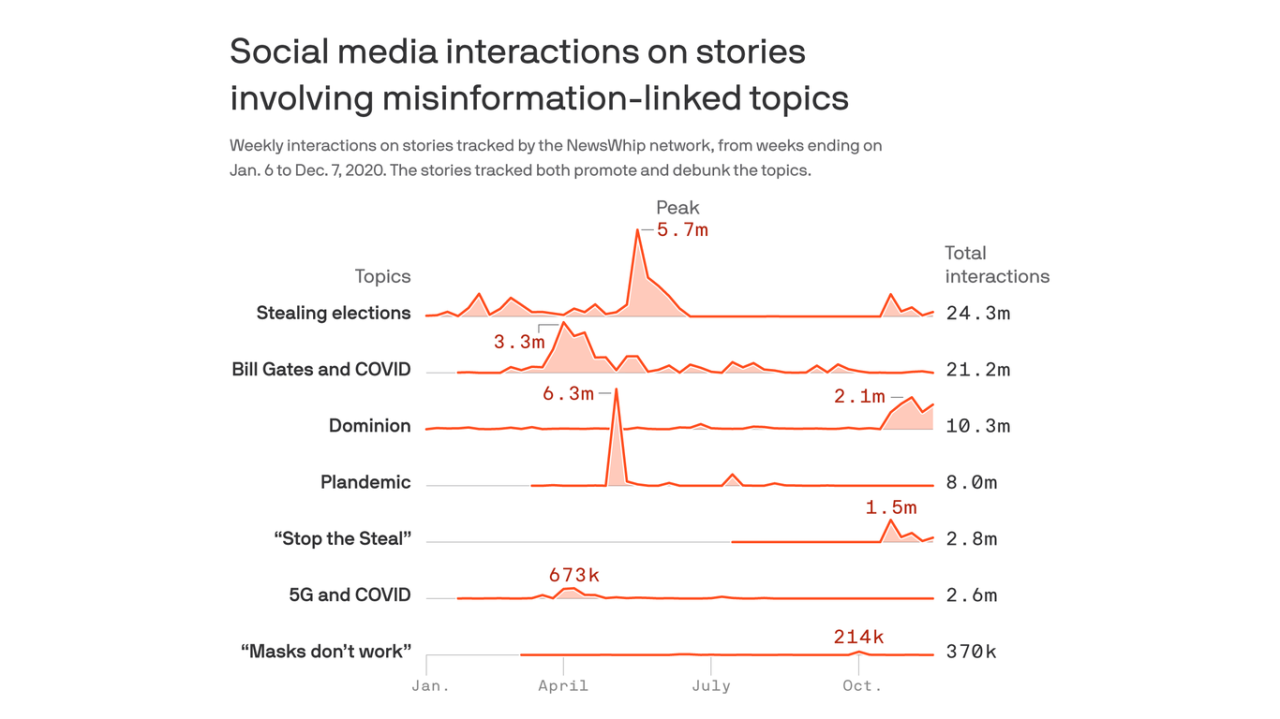
The decision of whether to outsource or maintain an in-house cybersecurity team is a critical one for mid-market companies. Both options present unique advantages and disadvantages, and the optimal choice depends heavily on the specific needs, resources, and risk tolerance of the organization. A careful evaluation of these factors is essential to making an informed decision that best protects the company’s valuable data and reputation.Outsourcing offers access to specialized expertise and often cost savings through economies of scale.
However, it can also lead to reduced control over security operations and potential communication challenges. In contrast, an in-house team provides greater control and potentially stronger integration with the company’s overall operations, but it necessitates significant investment in hiring, training, and ongoing maintenance.
Factors to Consider When Selecting a Cybersecurity Vendor
Choosing the right cybersecurity vendor is paramount. A thorough assessment should consider several key aspects to ensure a successful and beneficial partnership. Failing to do so can lead to inadequate protection and potentially significant financial losses.
- Vendor Expertise and Experience: Look for a vendor with proven experience in serving mid-market companies, demonstrating a clear understanding of the unique challenges faced by this sector. Their track record should include successful engagements in handling similar threats and vulnerabilities.
- Service Portfolio Alignment: The vendor’s service offerings must align precisely with the company’s specific needs. This includes evaluating whether they offer the necessary security tools and technologies, such as intrusion detection systems, vulnerability assessments, and incident response capabilities.
- Security Certifications and Compliance: Verify that the vendor holds relevant industry certifications, such as ISO 27001 or SOC 2, demonstrating their commitment to security best practices and regulatory compliance. This ensures they meet stringent security standards.
- Pricing and Contract Terms: Carefully review the pricing structure and contract terms to ensure transparency and avoid hidden costs. Consider whether the pricing model aligns with the company’s budget and future scaling needs.
- Communication and Reporting: Effective communication is crucial. The vendor should provide regular, clear, and concise reports on security posture, incidents, and remediation efforts. Establish clear communication channels and escalation procedures.
Checklist for Evaluating Cybersecurity Providers
A structured evaluation process is essential to minimize risks and maximize the benefits of outsourcing. This checklist provides a framework for a comprehensive assessment.
| Criteria | Rating (1-5) | Notes |
|---|---|---|
| Experience in mid-market sector | ||
| Service portfolio alignment with needs | ||
| Security certifications and compliance | ||
| Pricing and contract transparency | ||
| Communication and reporting mechanisms | ||
| Incident response capabilities | ||
| Customer references and testimonials | ||
| Data security and privacy policies | ||
| Service level agreements (SLAs) | ||
| Disaster recovery and business continuity planning |
Responsibilities of Mid-Market Companies and Outsourced Providers
Clear delineation of responsibilities is crucial for a successful outsourcing partnership. This prevents misunderstandings and ensures accountability.
Mid-Market Company Responsibilities: These include defining clear security objectives, providing necessary access and information to the vendor, overseeing the vendor’s performance, and maintaining internal security awareness training.
Outsourced Provider Responsibilities: These include delivering the agreed-upon services, adhering to security best practices, promptly addressing security incidents, providing regular reporting, and maintaining confidentiality of sensitive data.
Measuring the Effectiveness of Cybersecurity Initiatives
Measuring the effectiveness of your cybersecurity program isn’t just about ticking boxes; it’s about demonstrating a tangible return on investment and ensuring your organization is truly protected. By tracking key performance indicators (KPIs) and analyzing the data, you can identify weaknesses, optimize your strategies, and build a more resilient security posture. This process provides valuable insights for continuous improvement and justifies further investment in cybersecurity measures to senior management.Effective measurement requires a strategic approach.
You need to define clear goals, select appropriate metrics, and establish a consistent process for data collection and analysis. This data-driven approach allows for objective evaluation, preventing reliance on gut feelings or anecdotal evidence.
Key Performance Indicators (KPIs) for Cybersecurity Awareness and Effectiveness
Tracking KPIs provides a quantifiable measure of your cybersecurity program’s success. These metrics help you understand the effectiveness of your training programs, the level of employee awareness, and the overall security posture of your organization. A well-rounded approach includes both leading and lagging indicators. Leading indicators predict future performance, while lagging indicators reflect past performance.
- Phishing Simulation Success Rate: This measures the percentage of employees who successfully identify and report phishing attempts during simulated attacks. A high success rate indicates effective training and awareness.
- Security Awareness Training Completion Rate: This KPI tracks the percentage of employees who have completed mandatory security awareness training. Low completion rates highlight potential gaps in training delivery or employee engagement.
- Number of Security Incidents: This lagging indicator tracks the total number of security incidents, such as malware infections or data breaches. A decrease in incidents suggests improved security measures.
- Time to Resolve Security Incidents: This measures the average time it takes to identify, contain, and resolve security incidents. Faster resolution times indicate a more efficient incident response process.
- Mean Time To Detection (MTTD) and Mean Time To Response (MTTR): These are crucial metrics that measure the time it takes to detect and respond to security threats. Lower MTTD and MTTR values indicate a more proactive and effective security posture. For example, a company might aim to reduce MTTD from 72 hours to 24 hours by implementing enhanced threat detection systems.
Metrics to Measure Cybersecurity Program Success
A comprehensive set of metrics provides a holistic view of your cybersecurity program’s performance. These metrics should cover various aspects of your security strategy, from employee behavior to system vulnerabilities.
- Vulnerability Remediation Rate: This measures the speed at which identified vulnerabilities are patched or mitigated. A high remediation rate indicates proactive vulnerability management.
- Number of Successful Malware Infections: This lagging indicator tracks the number of successful malware infections within the organization. A decrease in infections indicates improved endpoint security.
- Data Loss Prevention (DLP) Effectiveness: This measures the effectiveness of DLP measures in preventing sensitive data from leaving the organization’s control. It can be measured by the number of attempted data exfiltrations blocked.
- Compliance Audit Results: This assesses compliance with relevant industry regulations and standards (e.g., GDPR, HIPAA). Successful audits demonstrate adherence to regulatory requirements.
- Employee Satisfaction with Security Training: Gathering feedback on the effectiveness and engagement level of security awareness training programs is crucial for continuous improvement.
Data Analysis and Identification of Areas for Improvement
Analyzing the collected data is crucial for identifying areas needing improvement. This involves comparing your metrics against industry benchmarks, identifying trends, and investigating outliers.Data analysis can reveal patterns and correlations that might not be immediately apparent. For instance, a high number of phishing attempts successfully bypassing employees might point to a need for more sophisticated training or improved phishing detection systems.
Similarly, consistently high MTTD could suggest a lack of adequate threat detection capabilities.
Reporting Cybersecurity Metrics to Senior Management
Presenting cybersecurity metrics to senior management requires a clear and concise approach. Focus on the key findings, highlight areas of improvement, and present recommendations for future actions. Visualizations, such as charts and graphs, can be particularly effective in conveying complex data.
Effective communication is key. Focus on the business impact of cybersecurity risks and the value of the implemented security measures. Avoid overly technical jargon and concentrate on the bottom line.
Final Thoughts
Successfully navigating the cybersecurity landscape as a mid-market company isn’t about being perfect; it’s about being proactive and informed. By understanding the common misinformation traps, implementing practical security measures, and fostering a culture of awareness, mid-market businesses can significantly reduce their risk and build a resilient security posture. Remember, it’s a journey, not a destination, so continuous learning and adaptation are key.
Investing in cybersecurity isn’t just about protecting data; it’s about protecting your business’s future. So, take charge, educate your team, and build a fortress against the ever-evolving threats of the digital world. You’ve got this!
FAQ Summary
What are some common signs of a phishing email?
Suspicious sender addresses, urgent or threatening language, grammatical errors, requests for personal information, and unusual links or attachments are all red flags.
How often should we update our software?
Software updates should be applied as soon as they are released to patch vulnerabilities. Prioritize critical security updates immediately.
What’s the difference between multi-factor authentication (MFA) and two-factor authentication (2FA)?
While often used interchangeably, MFA is a broader term encompassing 2FA. MFA can involve multiple authentication methods (e.g., password, security token, biometric scan), whereas 2FA typically uses two factors.
How can we encourage employees to report suspicious activity?
Create a safe and anonymous reporting system, emphasize that reporting is crucial, and reward employees for identifying potential threats without fear of retribution.
